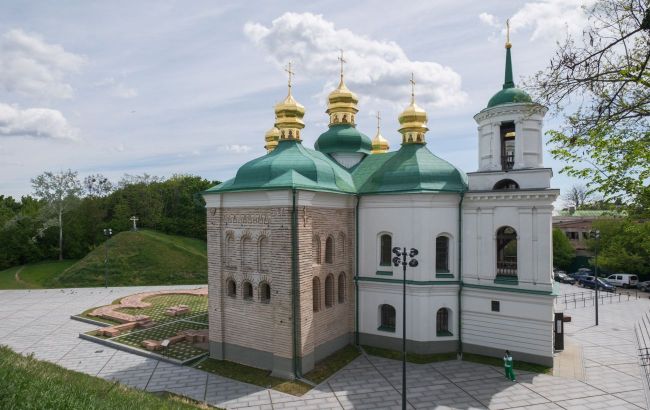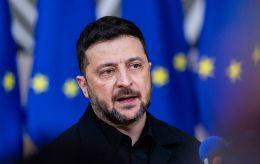Founder of Moscow buried in Kyiv? What archaeologists found in Lavra
 Church of the Savior at Berestove, where Yuri Dolgorukiy may be buried (photo: Vitalii Nosach, RBC-Ukraine)
Church of the Savior at Berestove, where Yuri Dolgorukiy may be buried (photo: Vitalii Nosach, RBC-Ukraine)
In the heart of the Kyiv Pechersk Lavra stands one of Ukraine’s oldest churches — the Church of the Savior at Berestove. According to historical sources, this is the site where the founder of Moscow, Yuri Dolgorukiy, may be buried, reveals Maksym Ostapenko, Director General of the National Reserve Kyiv Pechersk Lavra.
"This is one of the greatest monuments of the 12th century. It was a princely church and the burial place of the Monomakh dynasty. According to historical sources, the founder of Moscow, the son of Volodymyr Monomakh - Yuri Dolgorukiy - is buried either in this church or nearby," Ostapenko noted.
Why it matters
Yuri Dolgorukiy, regarded as the founder of Moscow, was the Prince of Kyiv in the 1150s. His burial in Kyiv directly contradicts Russian imperial narratives, symbolically because it connects the "beginning of Moscow" with Ukrainian land.
In the 1990s, Moscow authorities even attempted to gain control over this part of the Lavra.
The Moscow city administration formally requested that the territory of this church be transferred to Russia. Of course, the request was rejected," Ostapenko added.
 Church of the Savior at Berestove (photo: Vitalii Nosach, RBC-Ukraine)
Church of the Savior at Berestove (photo: Vitalii Nosach, RBC-Ukraine)
What is known about the search
Archaeologists have repeatedly studied the church. In the 20th century, they searched for Dolgorukiy's grave but unsuccessfully. To date, over 700 burials have been discovered, mostly of local residents. However, a large part of the area remains unexplored.
According to Ostapenko, all discovered remains are preserved in Ukraine.
Unique church with Petro Mohyla's signature
The Church of the Savior at Berestove is a unique monument that blends princely-era architecture with elements of Baroque, Classicism, and Neo-Gothic. It houses 17th-century frescoes depicting Metropolitan Petro Mohyla, including his personal signature.
 Original 11th–12th century fresco "The Miraculous Catch of Fish" on the western wall of the narthex of the Church of the Savior at Berestove (photo: Vitalii Nosach, RBC-Ukraine)
Original 11th–12th century fresco "The Miraculous Catch of Fish" on the western wall of the narthex of the Church of the Savior at Berestove (photo: Vitalii Nosach, RBC-Ukraine)
The shrine was destroyed during the Mongol invasion and later rebuilt by Mohyla, a prominent Ukrainian spiritual leader and reformer.
Earlier, we reported that the Kyiv Pechersk Lavra is undergoing a significant historical transformation. After breaking away from the control of the Moscow Patriarchate, it is returning to the Ukrainian spiritual space. Director General Maksym Ostapenko noted that the shrine is being cleansed of Russian narratives, propaganda, and ideology. This marks a restoration of Ukrainian identity, which Russia has attempted to erase for centuries by replacing national heritage with its myths and fabricated heroes.

